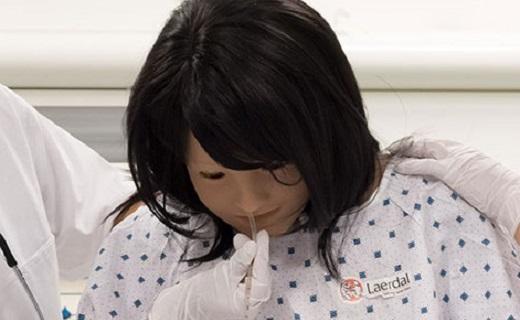The Manikin Helping Nursing Students Save Real Lives

When you walk into the nurse training facility on Toi Ohomai's Rotorua Campus, you can’t help but look twice at the ‘patient’ lying on the hospital bed. The similarities are uncanny: a chest that rises and falls, eyes that blink, skin that feels almost too human. But this patient is a state-of-the-art nursing manikin, also known as ‘nursing Anne’ – and she is helping Toi Ohomai’s Bachelor of Nursing students save lives.
Nursing Anne is manufactured by Laerdal Medical, a leading provider of education, training, and therapy products for emergency care. With a sole mission to help rescue 500 000 more people every year by 2020, they figured that the best place to start would be in the institutions that train those who save lives.
Featuring an impressive set of programmable abilities, ‘she’ can simulate everything from breathing complications, a heartbeat and physiological reactions to different types of trauma and injury.
“We are the first tertiary training institute one New Zealand to get one of these new state-of-the-art manikins,” says Brighid McPherson, Head of Toi Ohomai’s Department of Nursing. “It provides our nurses-in-training with the opportunity to learn skills they will need in practice, such as time management, decision-making, and communication during the most critical moments of treatment.
This year, Toi Ohomai’s nursing faculty will see more than 100 graduating nurses take these skills into practice when they start their internships.
“Working with the manikin is such a beneficial part of our course,” says Brighid. “It is a great way to teach aspiring nurses what to do in real-life situations, allowing them to build confidence for when they work with actual patients and learning how to act and react in these critical situations.”
Brighid notes that the environment makes students feel safer and more confident, as they get to experience life-like situations and practice, with room for mistakes that won’t cost a patient their life.
“While they know it is only a manikin, they have the opportunity to be more aware and active in their decision making, which is a skill they need in their nursing career. With real-time feedback from monitors and patients, they’re more capable of recognising the gravity of situations and responding accordingly,” concludes Brighid.
This hands-on learning approach is what differentiates Toi Ohomai from other tertiary training institutes and universities, as students are able to enter the workforce with a significant amount of practical experience, giving them a head start in careers that benefit from a more experienced, confident approach.
